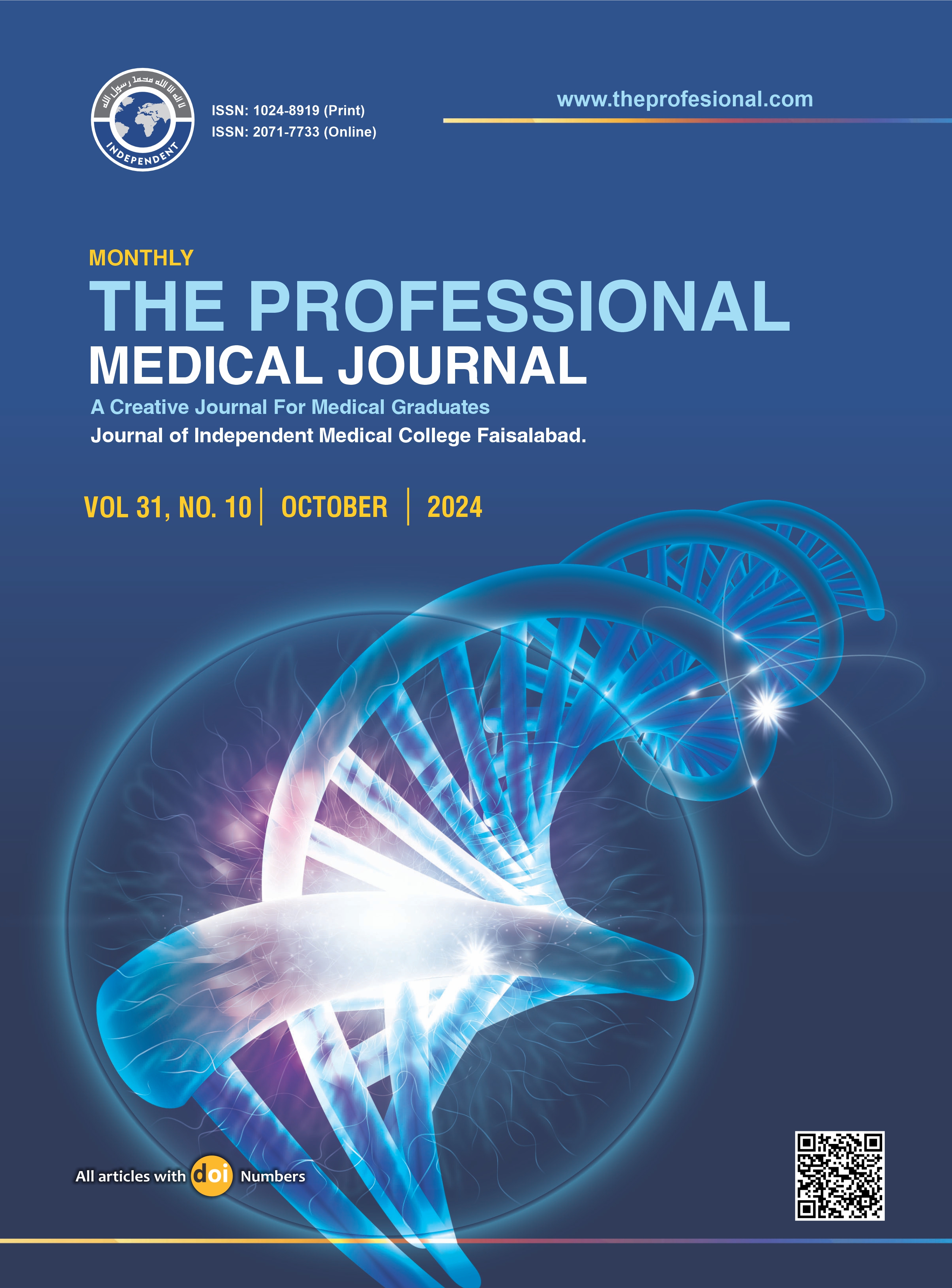Comparison of continuous versus modified continuous SMEAD jones “far-near-near-far” suturing technique for abdominal wall closure in emergency midline laparotomy wound in terms of wound dehiscence.
DOI:
https://doi.org/10.29309/TPMJ/2024.31.10.8253Keywords:
Midline Incision, Peritonitis, Wound DehiscenceAbstract
Objective: To compares the frequency of wound dehiscence in emergency midline laparotomy wound closure using the modified continuous Smead-Jones technique to the continuous method. Study Design: Randomized Controlled Trial. Setting: Department of Surgery, Allied Hospital Faisalabad. Period: December 20, 2022, to June 20, 2023. Methods: Every one of the one hundred patients having an emergency exploratory laparotomy gave written informed consent. They were split into two groups at random: Group A received continuous closure using prolene #01 suture bites placed 1 cm from the margin and 1 cm apart, and Group B received a modified Smead-Jones technique where suture bites were taken 1.5 cm from the wound margin and 0.5 cm linea alba on either side with prolene # 01 with suture placed 2cm apart. Wound dehiscence was checked following operational definitions. Results: The study's mean age was determined to be 40.18+13.53 years for Group A and 41.18+13.33 years for Group B. Males made up 58.0% (n = 29) of Group A and 72.0% (n = 36) of Group B, while females made up 42.0% (n = 21) of Group A and 28% (n = 14) of Group B. The mean wound dehiscence was 28% in Group B and 10% in Group 2. The p-value for this study was 0.022. Conclusion: When compared to the traditional continuous abdominal wound closure technique, the wound dehiscence rate was significantly lower with the modified continuous smead-jones abdominal wound closure method.
Downloads
Published
Issue
Section
License
Copyright (c) 2024 The Professional Medical Journal

This work is licensed under a Creative Commons Attribution-NonCommercial 4.0 International License.


